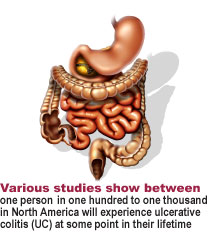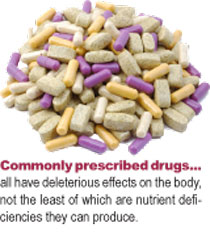Most all of us who are baby boomers know of Jack LaLanne. Some of you who, like me, started paying attention to nutrition back in the 1960’s, probably know of other long lived icons of the mid twentieth century natural food movement, such as Paul Bragg, Bob Delmontique and even Dr. N. W. Walker of juicing fame. All have preached the same doctrine, a “live food” diet rich in plant foods, most especially fruits and vegetables.
Though perhaps more conservative in their recommendations, even the United States Department of Agriculture (USDA), the American Heart Association (AHA) and the National Cancer Institute (NCI) recommend diets rich in fruits and vegetables, fiber, omega-3 fatty acids and lean protein.
When I first started studying nutrition back in 1967, many of the most popular supplements were what we might today call “super-foods,” if they weren’t so “old school:” alfalfa tablets, kelp, brewer’s yeast, molasses, desiccated liver tablets, wheat germ oil and cod liver oil.
Though health food stores became popular with my “hippie generation,” a real, long term “revolution” in the Standard American Diet never really happened. Today, health food stores are largely replaced with vitamin shops that sell mostly supplements, not healthy foods.
Given the rising obesity rates (with associated diabetes, heart disease and cancer rates) in the western world, it does not appear that the strategy of not eating very well and making up the difference with supplements creates the same kinds of benefits that Jack Lalanne, Paul Bragg, Bob Delmontique and Dr. N.W. Walker experienced.1 Indeed, the scientific data on the effects of mega-vitamin supplementation reports mixed results.2
Even given the massive resources of the U.S government and health associations promoting the 2005 USDA Dietary Guidelines, it has been reported that only three percent males consume the now recommended nine servings of fruits and vegetables a day.3 In fact, men on average eat only four servings a day. Yet only twenty-five percent of men believe they need to eat more!4 The Products for Better Health State of the Plate Report found, “No other food commodity (fruits and vegetables)—especially one with such importance to disease prevention—has a gap this large between recommended and actual intake.“5
Furthermore, according to recent excerpts from US Government press releases, only three percent of the US population follow just four out of five of the recommendations of the new food pyramid guidelines! Even the AMA now recommends that everyone take a multivitamin!6
Fast-Food Super-Foods?
In 2005, a press release posted on the www.5aDay.org site by the Produce for Better Health Foundation was entitled, Americans Need More than MyPyramid. Noting a broad-scale effort is needed to change America’s food environment, the foundation “unveiled a national action plan calling on institutions and industries to help make the healthy choice the easy choice…to reverse the obesity epidemic and its health crisis, and to close the gap in important nutrients and phytochemicals in the American diet, we need an environment where healthy food choices are encouraged and convenient.”7
Nonetheless, three years later, we are in virtually much the same position.
Now, we baby boomers want to live long and active lives. We know we should eat well. But we are busy, even too busy for our own good. While we will try to eat well when we can, we need a solution different from eating on the run while swallowing an ever growing list of supplements we “should” be taking. One such admittedly not perfect, but likely way to succeed is what may be called The Superfood Solution.
What We Need to Eat
“Knowledge of the role of physiologically active food components, from both phytochemicals and zoochemicals, has…evolved as…science has advanced beyond the treatment of deficiency syndromes to reduction of disease risk… The availability of health-promoting functional foods in the US diet has the potential to help ensure a healthier population….” American Dietetic Association Position Paper on Functional Foods, 1995
It is generally agreed that we need to eat more:
1) fruits and vegetables, from a wide variety of all the colors, especially greens
2) more omega-3 fatty acids
3) more fiber
4) lean proteins with less pro-inflammatory saturated and omega-6 fats.8
It is generally agreed that we should eat less:
1) high glycemic index foods
2) high glycemic load meals
3) high saturated, omega-6 and trans-fat meals.9
The superfood solution I propose would be comprised of good tasting functional food products, either ready to eat (ready to drinks, chewable gummies and/or bars) or instant to make (drink mix powders).
The most important super-foods may be products that supply the phytonutrients from fruits and vegetables, most especially the greens. Next in importance might be functional food products, including vegan formulas, rich in omega-3 fatty acids, including DHA. Finally, I believe we need products supplying lean, complete, high biological value proteins both from whey and plant sources. Soluble and insoluble fiber can often be incorporated in such products.
The Super-Food Solution
Though I am proposing this “superfood solution,” I agree with Jack Lalanne, “If you eat right you can’t go wrong.” But I also know the day-to-day practice reality of trying to make people change the way they eat, especially if nutritional advice is just an adjunct to your main health service. You don’t have the time, you couldn’t get paid properly for it if you did, and most patients won’t make large, long lasting changes anyway. If that is not true of your practice, and you are not an RD or other health professional whose whole practice is dietary advice and support, then my hat’s off to you!
But adding supplement pills, no matter how efficacious they may be, also presents many considerations for you and your patients:
1) Which ones to take?
2) How to take so many, everyday, forever?
3) Are you now, in your patients’ minds or in the opinion of some regulatory agency, treating diseases with supplements as if they were drugs?
4) Will your patients wind up buying them at the store for less, thinking you overcharge?
5) How efficacious are supplements when, often, the main nutritional problem is too much “bad fat,” too many high glycemic meals/snacks with too little fiber, too little phytonutrition?
The Superfood Solution answers many of these questions by providing quick, enjoyable and filling euglycemic, anti-inflammatory, high antioxidant, phytonutrient rich, satiating recipes that can function as meal replacements, snacks or pre-meals or even, with a little more effort, desserts.
An example of a “superfood breakfast of champions” might be a scoop of undenatured vanilla flavored whey protein with one teaspoon ground flaxseed in vitamin D and calcium enriched orange juice. This almost instant breakfast provides lean, complete high biological value protein protein, fiber, omega-3 fatty acids, phyto- and zoonutrients, vitamins and alkalizing minerals. Such a functional food dense breakfast likely either replaces the high glycemic, pro-oxidant, pro-atherosclerotic, pro-inflammatory meal or it adds to a breakfast that often consists of just a cup of black coffee and perhaps some high sugar juice drink. If a meal was replaced, the effect on the budget was likely minimal, as food needs to be purchased either way. If before just a cup of coffee was consumed, it is highly likely that that person more than makes up for it by high sugar and caffeine snacks and over eating in the evening! The key to ending that disastrous eating pattern is a healthy breakfast.
In providing guidance and products for superfood meals such as the one above, the health professional is fulfilling many a baby boomer’s desire for true wellness care, without directly treating their diseases with pills. By recommending dietary changes that almost everyone already knows they ought to follow, with supportive products that make it easy, you are providing scientifically sound, foundational lifelong nutritional wellness care that is easy to understand and implement in your practice.
Part of the superfood solution, both for your practice and your patients, is that you only need to provide them with two or four physician-quality superfood products. If you wish this superfood solution to be profitable, these products should be strictly available through health professionals only. Nonetheless, such a formula should also be easily available to your patients and their family members once they are no longer seeing you regularly. This can be via a personalized online store through your practice with drop-ship direct to your patient from the distributor or direct fulfillment provided from your offices.
We Doctors of Chiropractic have been on the forefront of nutrition supplementation for decades. The “superfood solution” allows the DC to offer scientific lifelong wellness nutritional care, made easy for patients to follow, easy for staff to implement and profitable to the practice. This solution is a viable option either as a stand alone service or foundational to more intensive nutraceutical/herbal/homeopathic adjuncts. Of course, this superfood solution will not be necessary if you can simply get all your patients, not just baby boomers, to eat like Jack LaLanne!
John H. Maher, D.C., oversees physician and consumer education for BioPharma Scientific, creators of NanoGreens10, NanoProPRP and NanOmega3. Dr. Maher is past post-graduate faculty of NYCC Academy of Anti-Aging Medicine, a Diplomate of the College of Clinical Nutrition, and a Fellow of the American Academy of Integrative Medicine. For a FREE copy of The SuperFood Solution: Lifelong Wellness Made EasyTM, simply call him at 1-877-772-4362, email [email protected] or visit www.nanogreens.com/free
References:
1) Obesity Trends Among U.S. Adults, BRFSS, Center for Disease Control 2004
2) Source: Cochrane Database of Systematic Reviews 2008, Issue 2. Art. No.: CD007176. DOI: 10.1002/14651858.CD007176. Antioxidant supplements for prevention of mortality in healthy participants and patients with various diseases. Authors: G. Bjelakovic, D. Nikolova, L.L. Gluud, R.G. Simonetti, C. Gluud
3) USDA Jan 2005 Dietary Guidelines, http://www.health.gov/dietaryguidelines/dga2005/document/
4) Mercy Net Health Information Archives, Sisters of Mercy, http://www.mercy.net/healthinfo/archive/020903.asp
5) 5-a- Day press release http://www.5aday.org/html/press/pressrelease.php?recordid=129
6) AMA’s Position on Nutritional Supplements: Supplements Shown to Provide Valuable Health Benefits :Vitamins for Chronic Disease Prevention in Adults, Scientific Review June 19, 2002; Kathleen M. Fairfield, MD, DrPH; Robert H. Fletcher, MD, MSc; JAMA. 2002; 287:3116-3126.
7) www.5aday.org/html/press/pressrelease.php?recordid=129
8) http://www.health.gov/dietaryguidelines/dga2005/document/default.htm
9) http://en.wikipedia.org/wiki/Western_pattern_diet









